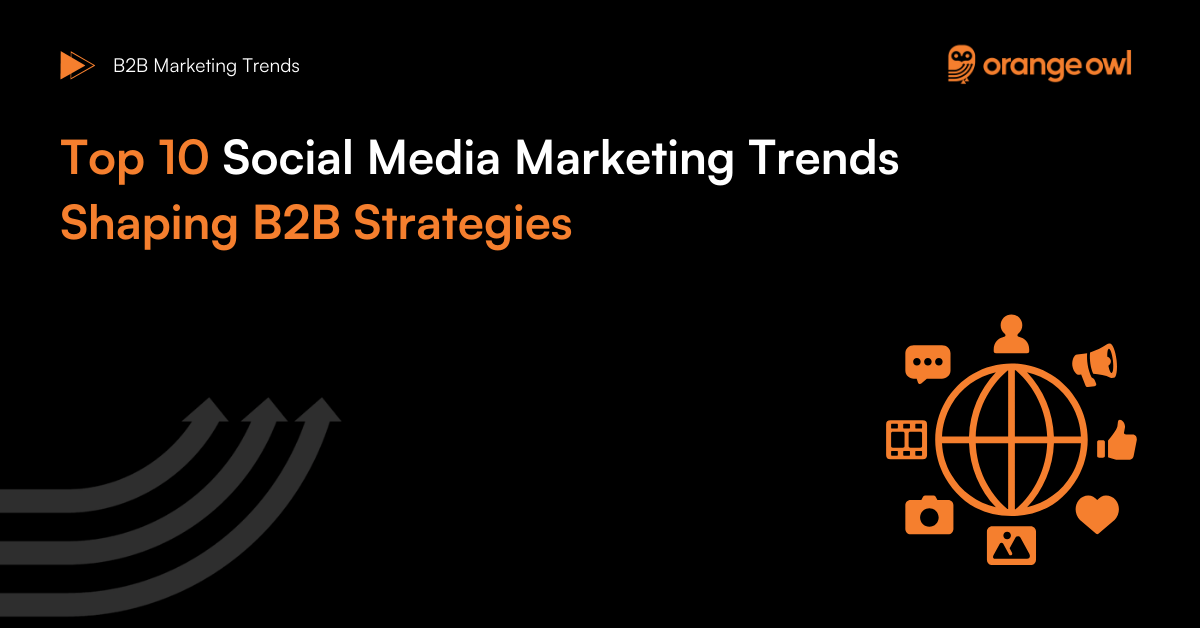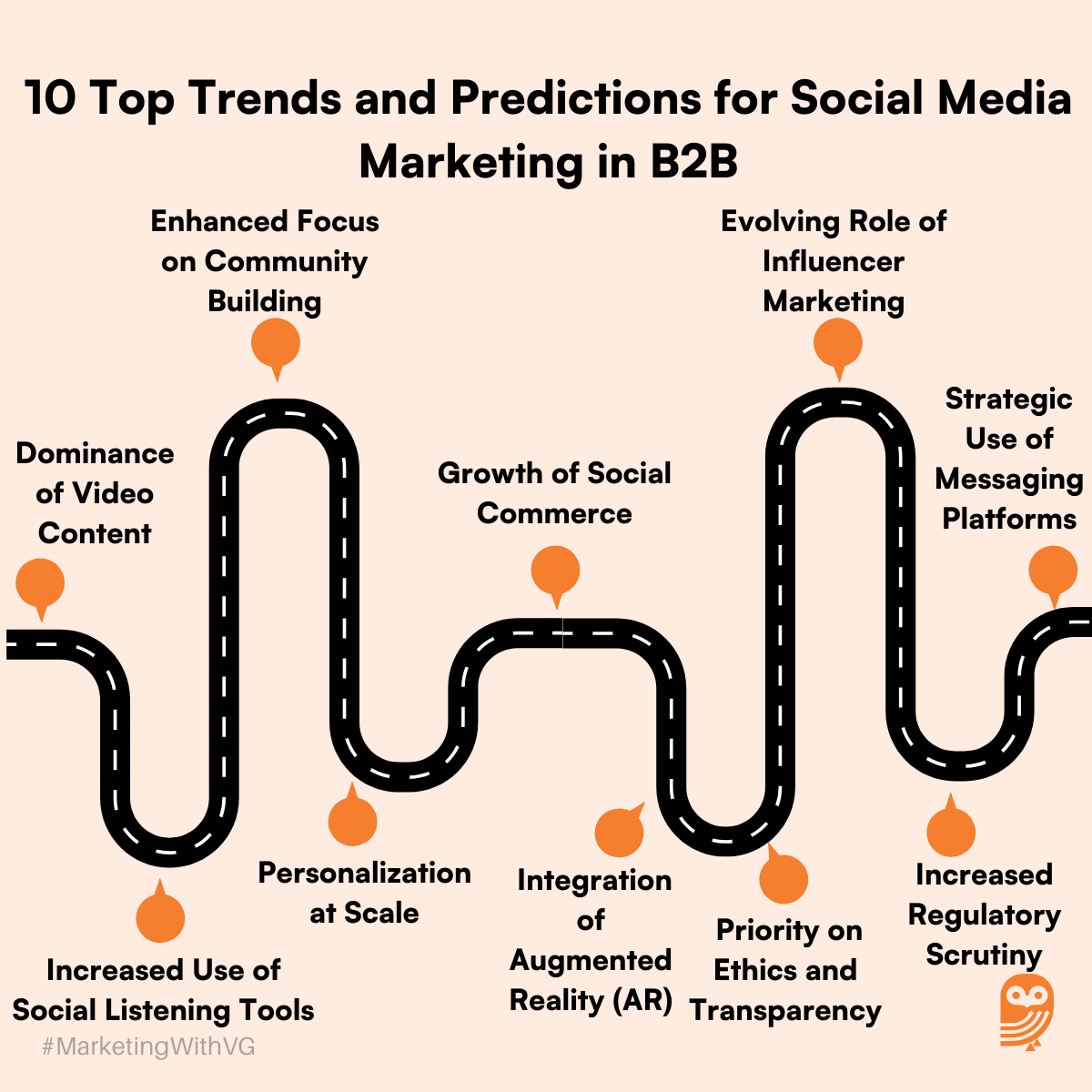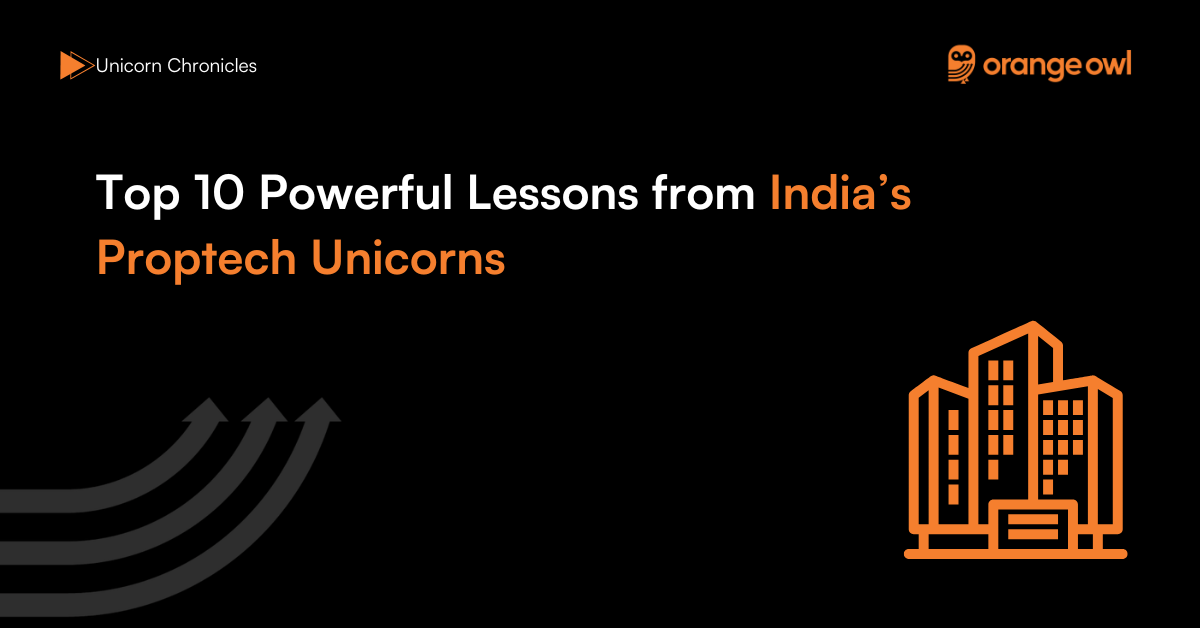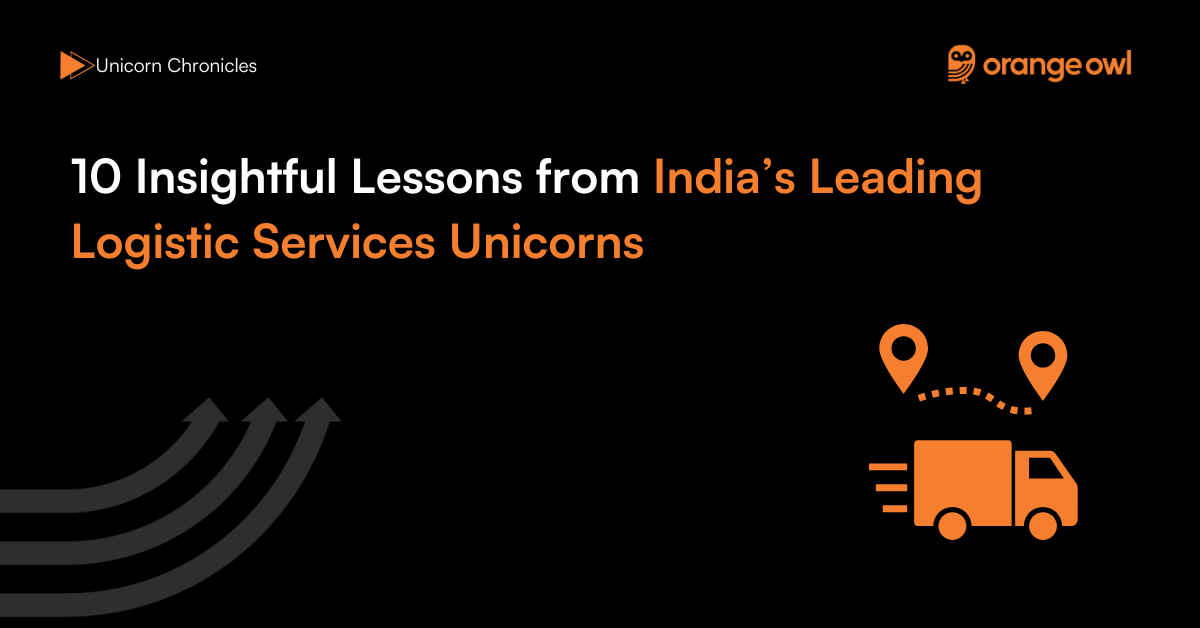Unlock Top 10 Social Media Marketing Predictions and Trends for 2025
Vivek Goel
December 16, 2024

Table of Contents
Introduction
As 2025 approaches, the importance of social media in B2B marketing strategies continues to expand, driven by evolving technologies and changing user behaviours. It’s crucial for B2B marketers to stay abreast of the latest social media marketing predictions and trends and adapt their strategies to maintain competitiveness and engagement through their social media channels.
Social media marketing allows companies to enhance brand awareness and organically connect with employees and existing and potential clients. In fact, there are over 4.5 billion social media users to date, and 84% of B2B executives use social media when making purchase decisions. This blog dives into the top trends and predictions for social media marketing in B2B for 2025, offering actionable insights to help you capitalize on these developments.
10 Social Media Marketing Predictions and Trends
Prediction 1: Dominance of Video Content
- Insight: Video content will continue to dominate social media due to its high engagement rates. Live streaming and interactive video formats are expected to become even more popular.
- Actionable Steps:
- Invest in quality video production and interactive elements like Q&A sessions within videos.
- Leverage platforms like LinkedIn and Facebook for live events and product demos.
- Example: A B2B software company could host live coding sessions or feature walkthroughs of new software releases to engage its audience.

Prediction 2: Increased Use of Social Listening Tools
- Insight: Social listening will become more sophisticated, allowing businesses to gather deeper insights into customer needs, industry trends, and competitive dynamics.
- Actionable Steps:
- Implement advanced social listening tools to monitor brand mentions, relevant conversations, and competitor activities.
- Use insights gained from social listening to tailor content and campaigns.
- Example: A B2B healthcare brand might use social listening to track discussions around healthcare regulation changes and then create content that addresses these topics.
Prediction 3: Personalization at Scale
- Insight: Personalization will no longer just be desirable—it will be expected by users across social platforms. AI-driven personalization will help tailor content to user preferences at scale.
- Actionable Steps:
- Use AI tools to analyze user data and personalize content, ads, and interactions.
- Create dynamic ad campaigns that adapt based on user interaction and engagement levels.
- Example: A B2B financial services firm might use LinkedIn ads personalized to users’ job roles and past interactions with the brand.
Prediction 4: Growth of Social Commerce
- Insight: Social commerce will expand into the B2B space, with platforms introducing more B2B-friendly features for direct transactions and lead generation.
- Actionable Steps:
- Set up and optimize your social media profiles for direct transactions or seamless lead generation.
- Integrate e-commerce capabilities into social platforms where your audience spends the most time.
- Example: A B2B electronics component distributor might use Instagram to showcase products and enable direct inquiries via Instagram Shopping features.
Prediction 5: Enhanced Focus on Community Building
- Insight: Building and nurturing online communities will become a critical strategy for sustained engagement and loyalty.
- Actionable Steps:
- Create dedicated groups or forums on platforms like LinkedIn or Facebook to foster discussion and community around specific topics.
- Engage regularly with your community through moderated discussions, shared content, and community-exclusive events.
- Example: A B2B legal services provider could establish a LinkedIn group for corporate legal professionals to share insights, updates, and best practices.
Prediction 6: Integration of Augmented Reality (AR)
- Insight: AR will begin to play a more significant role in social media marketing, providing immersive experiences that can showcase products and services.
- Actionable Steps:
- Develop AR filters or applications that allow users to interact with your products or visualize services.
- Partner with social media platforms that support AR to maximize the reach of your AR content.
- Example: A B2B interior design firm might develop an AR tool that lets potential clients visualize office spaces with different design schemes via Instagram or Snapchat.
Prediction 7: Evolving Role of Influencer Marketing
- Insight: Influencer marketing will continue to evolve with a greater emphasis on micro-influencers and industry-specific influencers who boast high engagement rates and niche audiences.
- Actionable Steps:
- Identify and partner with influencers in specific industries who align with your brand values.
- Co-create content that is authentic and adds value to both your and the influencers’ audiences.
- Example: A B2B software company might partner with well-known software developers or IT leaders to create content that speaks directly to tech audiences.
Prediction 8: Priority on Ethics and Transparency
- Insight: Consumers will increasingly value ethics, transparency, and authenticity from brands on social media.
- Actionable Steps:
- Clearly communicate your brand’s values and practices on social media.
- Engage in open conversations about industry challenges and how your company addresses them.
- Example: A B2B manufacturing company might share behind-the-scenes content about its sustainable manufacturing processes or ethical labor practices.
Prediction 9: Strategic Use of Messaging Platforms
- Insight: B2B buyers are looking for real-time communication; messaging platforms will become an integral part of the social media strategy.
- Actionable Steps:
- Utilize platforms like WhatsApp Business or LinkedIn Messaging to communicate directly with prospects and customers.
- Automate responses for common inquiries while providing an option to connect with a human for more complex questions.
- Example: A B2B building materials supplier could use WhatsApp to offer instant product support and troubleshooting advice to contractors.
Prediction 10: Increased Regulatory Scrutiny
- Insight: As social media’s role in business grows, so will regulatory scrutiny, particularly around data usage and privacy.
- Actionable Steps:
- Stay updated with social media compliance and best practices in your industry.
- Ensure all your social media activities comply with relevant laws and regulations.
- Example: A B2B pharmaceutical company must ensure all its social media marketing adheres to FDA regulations regarding advertising and patient privacy.
Conclusion
For B2B companies, embracing these social media marketing predictions and trends in 2025 is not just about keeping up with technology but about strategically leveraging these platforms to build deeper relationships with business customers. By anticipating these trends and incorporating them into your marketing strategies, your business can achieve greater visibility, engagement, and ultimately, sales success in the digital age.
Frequently Asked Questions(FAQs) on Social Media Marketing Predictions
Video content will continue to dominate due to its ability to convey information quickly, engage users, and provide a more immersive experience. Video’s high engagement rates make it a powerful tool for B2B brands to increase visibility and communicate complex ideas or products effectively. By incorporating live streaming and interactive videos, businesses can foster real-time engagement and build trust with their audiences.
Social listening is the practice of monitoring social media channels for mentions of your brand, competitors, and relevant industry keywords. For B2B businesses, it provides valuable insights into customer needs, emerging trends, and potential market opportunities. By analyzing these insights, businesses can tailor content, improve products, and better engage with their target audience, thus improving marketing effectiveness and customer satisfaction.
Personalization at scale can be achieved by leveraging AI-driven tools that analyze user data, including behaviors, preferences, and job roles. This allows B2B businesses to create dynamic ad campaigns that adapt based on individual interactions. For example, a B2B company might tailor LinkedIn ads based on users’ job titles and their previous engagement with the brand, ensuring content resonates more effectively with different segments of the audience.
Social commerce will grow as B2B platforms introduce more features for direct transactions and lead generation. For B2B companies, this means optimizing social media profiles for easy customer purchases or lead inquiries. For instance, integrating e-commerce features into platforms like Instagram and Facebook allows businesses to showcase products and facilitate immediate transactions, making the buying process more streamlined for business clients.
Community building fosters long-term relationships and strengthens customer loyalty. By creating dedicated online spaces (e.g., LinkedIn or Facebook groups), B2B companies can engage their audience in meaningful discussions and share valuable content. This strengthens brand affinity, enhances customer retention, and encourages collaboration among peers, positioning the business as a thought leader in its industry.
AR technology can create immersive experiences for potential clients, allowing them to interact with products or services in a more engaging way. B2B companies can develop AR filters or apps that let users visualize their products in a real-world context (e.g., seeing how an office layout might look with different furniture arrangements). Platforms like Instagram or Snapchat offer AR tools, making it easier for B2B brands to engage users visually and interactively.
Influencer marketing in B2B will evolve to focus more on micro-influencers and industry-specific experts who have smaller, highly engaged audiences. These influencers are more likely to create authentic content that resonates with their niche followers. By partnering with relevant influencers in your industry, B2B companies can build credibility and foster trust among potential clients, leading to higher engagement and conversions.
Ethical practices and transparency are increasingly important to consumers, who want to engage with brands that align with their values. B2B companies will need to be open about their business practices, such as sustainability efforts or ethical labor practices. Being transparent about company values and actions helps build trust with the audience and strengthens long-term relationships with clients and prospects.
Messaging platforms, such as WhatsApp Business or LinkedIn Messaging, allow for real-time communication with prospects and customers, enabling quick responses to inquiries and facilitating smoother business transactions. B2B buyers value immediate support, so integrating these platforms into your social media strategy will enhance customer service and streamline lead generation processes.
With increasing scrutiny on data privacy and regulations, B2B companies must stay updated on the latest laws and best practices regarding social media marketing. Businesses should ensure that their activities comply with industry-specific regulations, such as those set by the GDPR for data protection or FDA guidelines for healthcare advertising. Regular audits, employee training, and clear communication about data usage can help mitigate risks and avoid penalties.
By staying on top of these trends and implementing best practices, B2B companies can maximize their social media marketing impact and position themselves as leaders in their respective industries in 2025.


